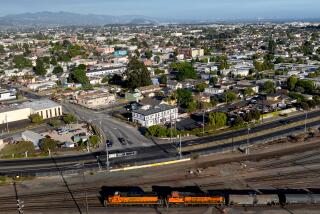Publisher-Led Group Buys Reader, Plans New Look
- Share via
The 10-year-old Los Angeles Reader, the free weekly tabloid that has been trying for the past year to regain its earlier momentum, has been sold to a group led by its publisher.
Burnside Group, formed by Reader Editor and Publisher James E. Vowell and others, will publish the Reader under a license agreement with Chicago Reader Inc., which started the Los Angeles paper in October, 1978, Vowell said Wednesday. Vowell declined to disclose financial details of the deal but said Chicago Reader will hold a small percentage of the new company. Chicago Reader, which publishes a weekly under the same name in Chicago, owns the Reader name. The independent 129,000-circulation San Diego Reader has a similar licensing agreement with the Chicago company.
Other Burnside Group principals include Reader Advertising Director Ron Slack, who has also been named associate publisher, and Los Angeles attorney Codette Wallace.
Vowell said the change in ownership will be accompanied by a major change in the Reader’s format, beginning with Friday’s edition. The change will include a new version of the Reader’s backward “R” logo, he said. The paper’s size will shrink to 11 by 14 inches from 11 by 17 inches, he said.
Targets Different Audience
“The shift in size serves several objectives,” Slack said in a statement. “We wanted to make the paper more graphically exciting and our readers have long asked that we enhance the presentation of our excellent cover art. The new size also will accommodate our advertisers’ longstanding desire for a format more compatible with other Los Angeles publications,” he added.
The change would make the 65,000-circulation Reader about the same size as the L.A. Weekly, which has a circulation of 165,000 in Los Angeles and the San Fernando Valley. The Reader is distributed mainly in neighborhoods on the Westside of Los Angeles.
Vowell acknowledged that advertisers view the Weekly as the Reader’s competition, but he said the Reader is targeting a different audience. “We address a slightly older, more sophisticated audience,” he said.
The Reader would like to see some circulation increases, but Vowell said he is “perfectly happy” with the current 65,000 “niche” circulation. “I think we’ll see an inching up of 5,000 to 10,000 a year. The Reader is an acquired taste. . . . Some of our stuff is esoteric.”
Last week’s edition featured an essay by a female writer on “What Makes a Great Lover” next to a story about the battle over the development of the Wilshire Tower in the Miracle Mile district. Both the Reader and L.A. Weekly devote generous space to the arts and entertainment, and both include personal ads.
Banned ‘Phone Sex’ Ads
Vowell, who was the Reader’s first editor, returned to the publication last year after a four-year hiatus.
In the interim period, according to some in the publishing industry, the Reader lost some of its momentum because it had difficulty developing a clear identity in the Los Angeles mix of “alternative” publications.
The Reader also lost revenue last year when it banned ads for sexually oriented telephone services. That move cost the company about 20% to 25% of its revenue, Vowell said. The ban on such ads continues, but he said the paper has made a lot of progress in the past year in recouping that revenue.
He declined to say whether the paper has ever been consistently profitable but predicted that, “It’s going to be profitable next month.” For the longer term, he said, “we are taking a number of steps to put us at break-even or a profit.”
Through affiliated companies, Chicago Reader holds a 48% interest in the East Bay Express in Berkeley and 100% of the Washington City Paper.
Bob Roth, publisher of the Chicago Reader, said the previous owners sold to Vowell’s group because “of the realization that James could maybe do a better job.”


